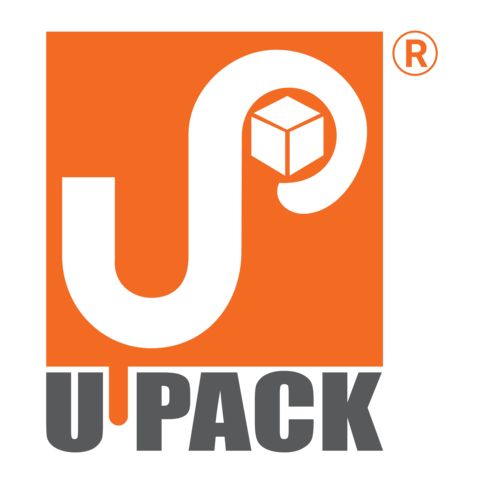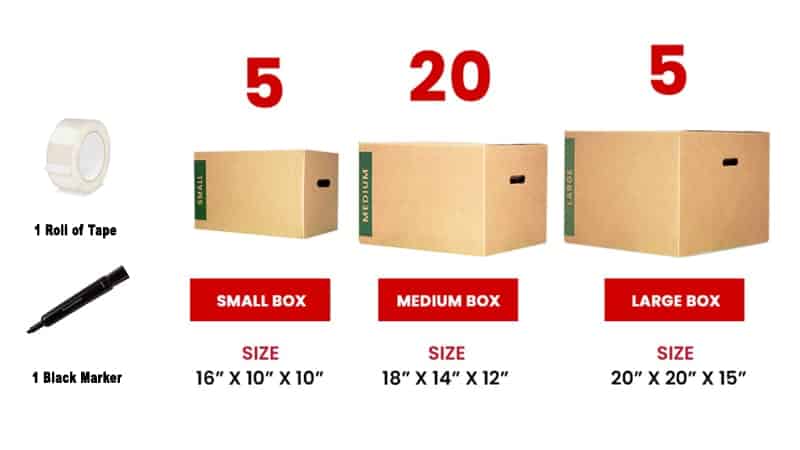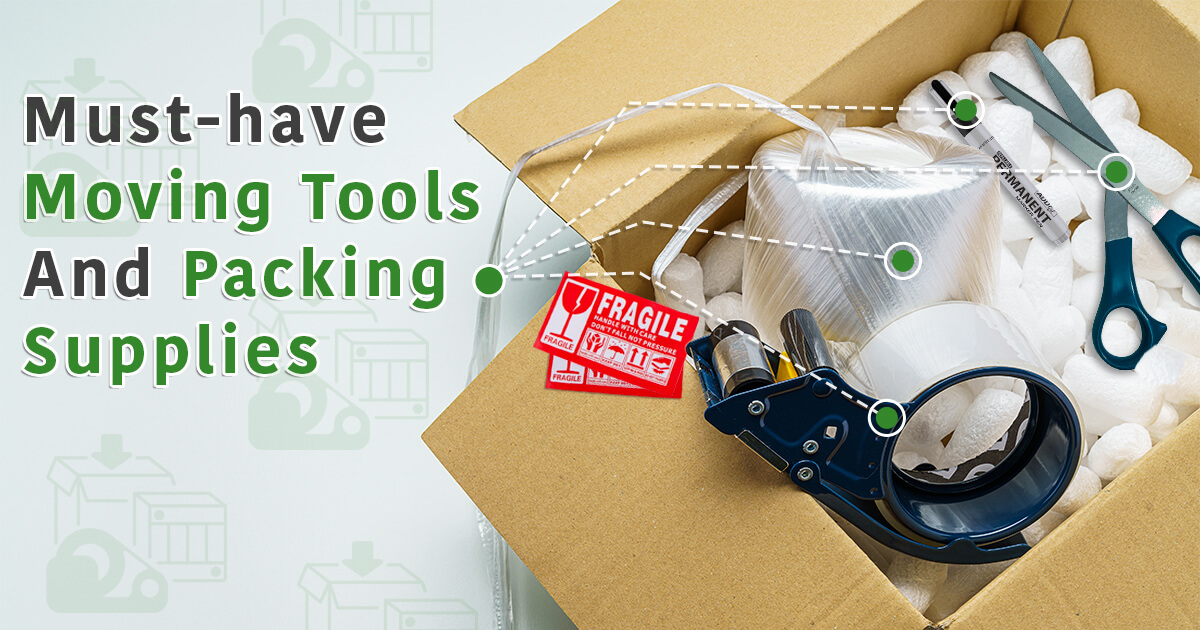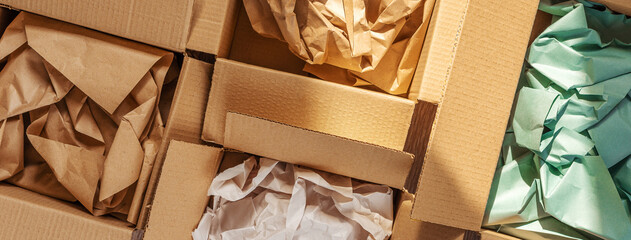The Ultimate Packing Material Checklist For Moving
The Ultimate Packing Material Checklist For Moving
Packing all of your necessities, clothes, and other belongings, as well as keeping track of them throughout the move, may be a significant task when moving residences. The task becomes lot simpler if you have the appropriate packing supplies, though.
You need a variety of shipping boxes in various sizes, tape, bubble wrap, and other things to aid with the moving procedure. Finding all of this under one roof can be challenging, but you can always search online for movers in your region and order everything in advance to make the move simple and easy.
By planning ahead and arranging your moving goods, you may save money, time, and anxiety. When moving day finally arrives, you'll be concentrating on the job at hand rather than gathering packing materials. We advise buying moving supplies in advance, at least a few months. Here are our must-have packing essentials for a simple relocation process. Use this as a shopping list and take notes.
If you are confused about which shipping boxes you need and what sizes you should order, check out our ultimate packing checklist below.
Essential Moving and Packing Supplies You Should Never Move Without Moving
Are you planning on moving soon? You should always begin storing up on all the necessary moving and packing goods you will require as soon as possible. Why not give yourself the gift of having everything you need to pack up and get moving on hand and ready to grab when you need it? You're likely to be focused on finishing the task when you're in the middle of the move, so why not?
Despite the fact that I've relocated over 20 times, I will never move again without the following lists of essential packing and moving items. Take note of this, use it as a shopping list, and most importantly, enjoy yourself by playing your favourite music while you go. Getting the proper materials is the first step in being ready to move, which makes it much simpler.
I've omitted certain things, like cleaning materials, so this is by no means a comprehensive list. The majority of the elements are absolutely necessary to complete the task correctly, however a few are optional. Find out exactly what they cover and what you need to buy yourself if you're employing traditional movers or hourly labour. For instance, if you're only getting assistance with loading, you'll need to pack everything yourself. You should also ask about additional materials like shrink wrap and tie-down straps to preserve furnishings. Keep everything planned out on moving day.
I’ve divided the items into two categories:
- Packing supplies, you’ll need to pack up all your belongings.
- Moving supplies, you’ll need on the big day.
Packing Supplies List Before Moving Day
Boxes
Even though it might be acceptable to obtain free boxes for lighter things, keep in mind that not all boxes are made equal; size, strength, and sturdiness matter. In order to have a variety of box sizes, heavy objects, like books, should go in the smaller boxes, and lighter items, like garments, should go in the medium and big boxes. And you most certainly don't want boxes that will disintegrate. Consider whether you require any specialized boxes, such as dish set boxes and flat-screen TV boxes.
Unfortunately, figuring out how many boxes you'll need doesn't have a universal formula. You can hazard a guess, but you'll probably need to make a few trips to the store. 70 to 150 boxes, on average, should fit within a typical three-bedroom house
How many boxes will you need for your move?
Here's a short breakdown of how many boxes, on average, you'll need for various moves of different sizes. While our table provides some broad parameters depending on household size, keep in mind that the quantity of boxes required for a house with three bedrooms and 1,200 square feet would be very different from a house with three bedrooms and 2,200 square feet. How many of each size you'll need truly depends on the particular goods you already have. Someone with a large collection of trinkets or books will require more little boxes than someone with a sizable T-shirt collection. You might also think about purchasing a moving supply package, which makes things easier by providing you with a variety of boxes and other necessary items.
Estimatedof Boxes Size Needed By Household
|
Household Size |
Small
|
Medium 18 x 14 x 12 |
Large 20 x 20 x 15 |
Total Qty Of Boxes |
|
Studio Apartment |
6 |
12 |
2 |
20 |
|
Bedroom 1
|
8
|
20 |
4 |
32 |
|
Bedroom 2 |
14 |
30 |
6 |
50 |
|
Kitchen + Store Room |
26 |
54 |
12 |
92 |
|
Leaving Area With Furniture |
40 |
70 |
16 |
126 |
Bubble wrap and packing paper roll
If you're on a really tight budget, this is one place where you can make a little savings. Unless it is included in a moving materials bundle that I have purchased, I never pay for packing paper or bubble cushioning roll. As an alternative, I make use of newspaper, mailer sheets (at last, a use for junk mail), garments, linens, and any bubble cushioning rolls I've kept from shipping items.
Packing tape in extra rolls
The issue is this: Stock up because you nearly always need more packing tape than you anticipate. And ensure that it is quality material. The cheaper tape can appear to be a fantastic deal, but you'll need to use much more of it and it won't be as trustworthy.
Scissors
When you are moving and packing, always keep a set of robust, sharp scissors on hand. These will come in handy for more than just cutting tape; they'll also be the first thing you grab when you need to reopen a box (packing errors do occur, believe me), alter a blanket, or create your own box for a special item.
Knife or Box Cutter
Now that we've established that, many people choose to forego the box cutter because they believe that a reliable pair of scissors suffices. However, doing so would be wrong. Because they can quickly and effortlessly cut through boxes like butter, box cutters save time. When you're moving and exhausted, this is crucial to remember as you're breaking down your boxes. They work incredibly well for slicing through heavy-duty plastic zip ties that can snap scissors.
Masking tape
When it comes to packing and moving, as those who know me well may attest, I nearly worship painter's tape. The versatility of Swiss Army knife and painter's tape are equal. Painter's tape is made to be sticky but less abrasive or tacky than other tapes, so it may be removed without harming the surface it was attached to.
Use it to label boxes, securely group loose objects like silverware or pens, and lay out space constraints on your floor. I personally use this trick when I'm attempting to make sure things will fit into a small moving or storage space. Painter's tape can also be used to label objects covered in bubble cushioning roll, keep furniture drawers locked, label items that are wrapped in bubble wrap, and attach nuts, bolts, and screws to their original components so you won't have to search for them afterwards.
Paper and a Pen
We're going old-school, but you know what they say—if it ain't busted, don't repair it. To assist with your move, get some paper and a pen and use it to create an inventory list. Write down everything you're putting in a certain box, give that box a number, and list it all out on the piece of paper. Make sure you don't miss any boxes when you're unpacking by pulling out your inventory sheet and checking it off. This will also help you recall what you packed in each box.
Heavy-Duty or Flexible Trash Bags
Always get more trash bags than you think you'll require because, spoiler warning! you'll want to utilize them for much more than simply rubbish. Have all the boxes you need been used up? No issues! Simply substitute a trash bag. You don't want to spend money on clothing boxes. trash can. Do you have linens? trash can. random pillows or cushions? Trash bag, as you could have guessed. Yes, you will also have a ton of rubbish
Thick Marker
Unless you have the ability to record everything, you won't know what is in your boxes. Choose a thick marker instead of pens and pencils. To what extent? Perform the look test. Make sure you can read the writing you've written on a box's side just by glancing at it. A 4-mm regular-tipped permanent marker and a 5-mm marker are about as thin and thick as you should go.
Adhesive labels and colour stickers
Some people who are really organized prefer to use labels and colour stickers or dots, while it is not necessary. When moving a big family, color-coding can really come in handy because you can label every box and non-boxed item to remember what goes where. Color-coding can assist in directing which items go in each moving container if you're utilizing more than one. The best thing is? Your color-coding could help you save a lot of time if you're utilizing help for the heavy lifting because they won't have to continually asking you where to put things, which will save them a lot of time.
Moving Supplies List for Moving Day
Blankets For Moving
Moving blankets can be used for two things when you move. One usage for them is as furniture covers or to protect delicate goods like bicycles from scratches and damage. Two, you can utilize them to assist you in physically moving large objects. Although it is a little of a hack, you can drag a large object across the floor by placing it on a moving blanket, such as a dresser, heavy box, or mattress. This will safeguard your furnishings, the floor, and your back.
Rolling or manual cart
Using a hand cart or dolly greatly simplifies the transportation process. Make sure the truck you are renting has a ramp. If not, you might wish to hire one because pushing a large object up and down a surface is safer than attempting to lift it.
Shrink Wrap
To preserve upholstered, wood, and metal furniture when loading it yourself, you'll need a roll of large shrink wrap. This helps prevent damage to the walls of both your old and new residences in addition to shielding the furnishings from being damaged or soiled. Ask whether they will be providing a supply and how much they charge if you are employing hourly moving help for the loading.
Mattress Cover
Mattress bags are a cheap and practical solution to keep your pricey mattress clean during a relocation, and they are another sometimes forgotten necessity. Don't let anyone convince you that you can move your mattress without one while keeping it clean! Need more direction? Additional advice on how to relocate your mattress is available from us.
Polythene Bags
Plastic bags are handy for organizing little things, such as fasteners, shelving brackets, jewellery, or beads. Purchase white-banded, sealable plastic bags for labelling.
Rope or Ratchet Straps
Use sturdy straps or rope to tie down and secure your possessions periodically if you're packing your own rental vehicle or moving container. In order to avoid harm from shifting inside during the shipment procedure, this will aid in keeping your belongings in place.
Supplies for Cleaning
Not to mention, you'll be glad you packed some essential cleaning goods for a spotless move into your new house after leaving your old one. To make accessing this box easier, put it in your car rather than the moving truck.
Paper towels, safety goggles, window and bathroom cleaners, a mop and bucket, broom and dustpan, and a portable vacuum cleaner are all things you should have on hand.
Key Lock
You must secure your rental truck or moving container with your own lock in order to protect your possessions. What the experts advise is a strong disc lock. Just be careful to store the key in a secure location so it won't get lost—keep it with you at all times!
Tips
What not to pack in boxes when moving?
That includes the typical suspects, such as firearms, explosives, flammables, and domestic animals. You might not consider the valuables and irreplaceable goods you want to make sure don't get misplaced, though. It's also a good idea to avoid bringing anything perishable, regardless of how short the distance is. Even if you believe that such food products would stay fresh once they arrive at your new house, they also serve as a warm invitation for bugs.
Where do I start packing when moving?
Always with the items I use, touch, or otherwise rarely see. For instance, the attic is the ideal starting point. Additionally, since they don't touch your daily life, it is typically a little simpler to remove those least-used items out of the way. Then I like to move on to anything out of season, such as sports gear, garage items, and any clothing that I won't be using any time soon. I just keep going over everything from there until I have to pack up that special box or bag of items that I need to bring with me on the first night at my new apartment.
Advantage Tip
- Choose the sturdy or reinforced flexible trash bags to avoid double-bagging and concerns about the bag ripping.
- Pack one room at a time to be organized and prevent losing your scissors, marker, and other necessary packing supplies. This stuff is so, so simple to misplace, even in a single room! Always place your scissors and other equipment on the same surface or in a visible location, such as a window ledge. Additionally, you can group all of these instruments into a compact, transparent box, bowl, or other useful container.






